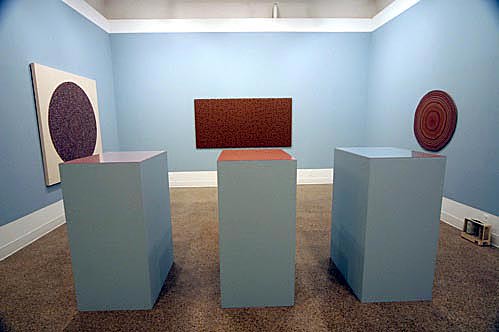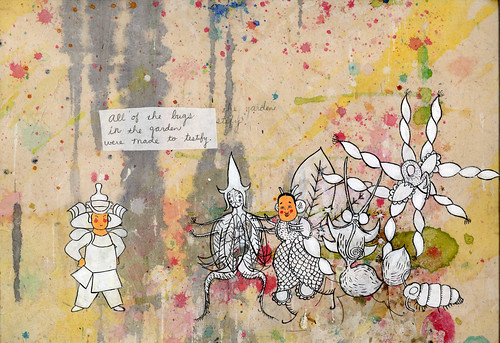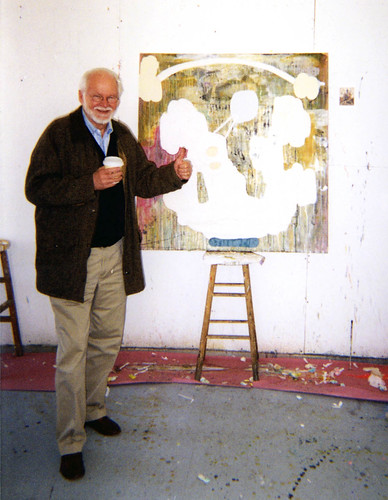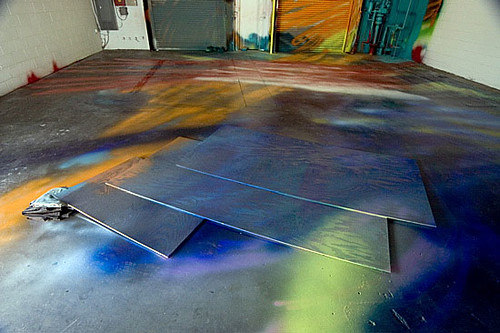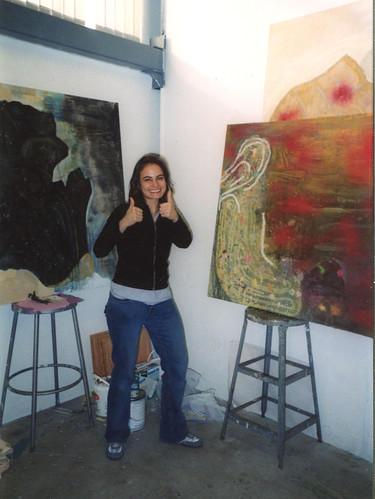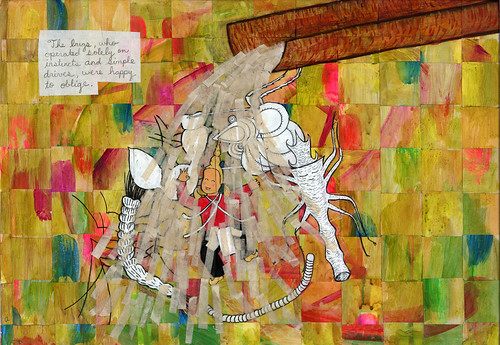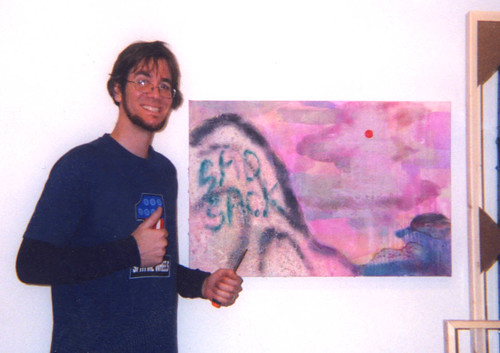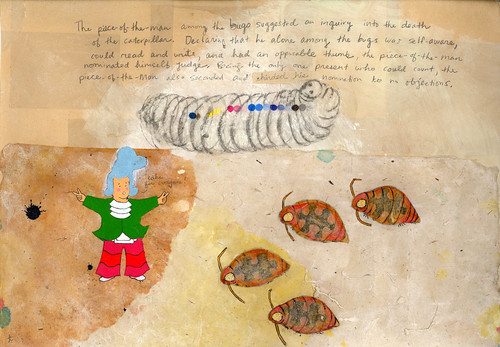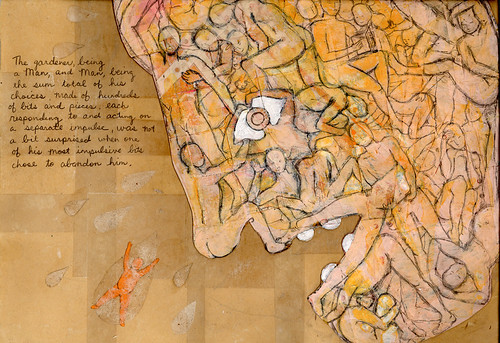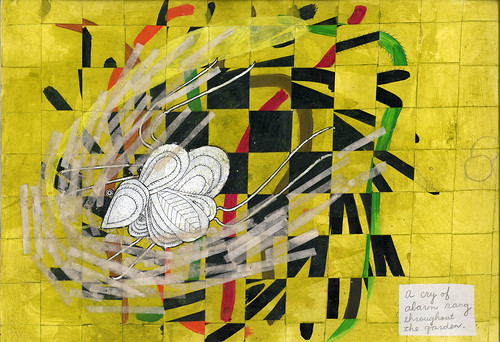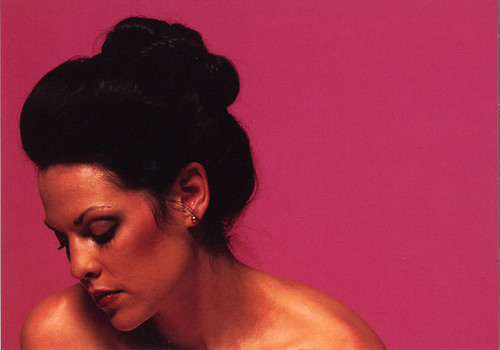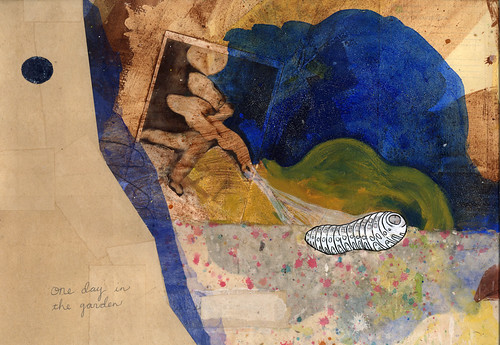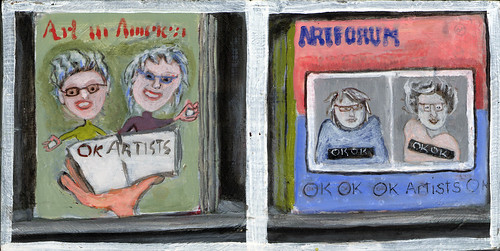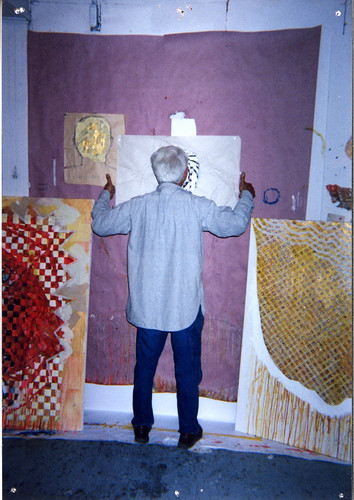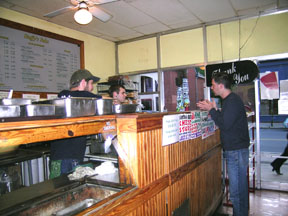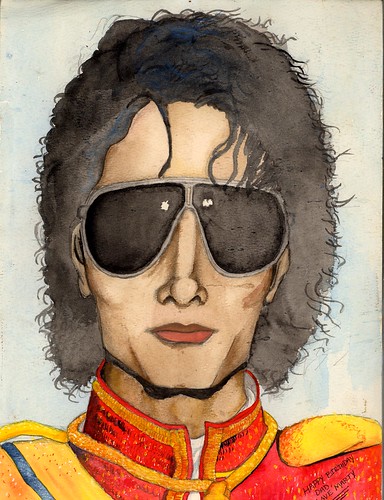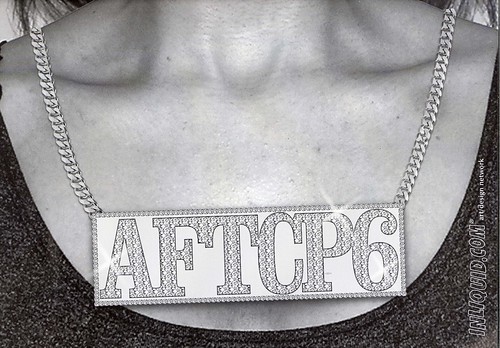Someone was kind enough to send me some photos of Relativity, the Anderson Gallery's current exhibition, featuring the work of four local artists (Jeannine Harkleroad, Chris Norris, Sun Tek Chung, James Davis) each paired with that of artists from the gallery's collection.
The galleries look good, as good as I've seen yet, but some aspects of the installation really bother me. The artwork of the four locals (all of whom work for VCU) is well-presented but that of artist's from the gallery's collection is mostly annoying and frustrating.
The picture above is of the work of James Davis paired with that of Jules Olitski. The three pieces on the wall belong to Davis; Olitski's prints are on the pedestals. Those pedestals are at least five feet high and covered with plexiglass. I'm six feet tall and except for the edges all I could see was glare. ANNOYING! I'm pretty sure that is not the way the artist intended for them to be presented. Here is what they supposedly look like, but although I've seen them for real I can't confirm that. Hey George, sometimes it is better to see things on the web!
There was a funny(?) moment at the opening when I was on the periphery of a circle admiring Davis' work (including the artist and Dean Richard Toscan) and Elizabeth King was introducing Davis and his work to a couple. She made a sweeping gesture with her arm saying something like "James did all these" which ended with her hand on the Olitski pedestals. I said those were by Jules Olitski and she looked a bit confused. I forget what we said next exactly but I did tell Toscan that I know Olitski's daughter. I was on his left and he continued to look straight ahead and sort of ignore me. Toscan looks like David Paymer to me, whenever I see him I think it's the mob guy from ABC's Line of Fire (it was set in Richmond!).
Almost as bad as the presentation of the Olitskis was the presentation of a photograph by Thomas Daniel, the artist whose work is juxtaposed with that of Sun Tek Chung. I say almost as bad because if you get on your knees and tilt your head to the side you are able to check out Daniel's photograph, whereas with the Olitskis you don't have a chance. Here it is.
At the recommendation of a more sensible artist friend I contacted the curator, Amy Hauft, for more insight into some of her presentation decisions and she wrote back explaining some of her ideas:
"In all cases with the works from the Anderson collection, I wanted to take them away from being exclusively images and force them into being "things". I did this with the Olitskis by presenting them on edge at eye level atop pedestals of their exact dimension. As mentioned in the handout, I wanted to highlight the iridescent ink that was more visually pronounced at that angle. In some ways, you could say that I was treating them the way that James Davis treats his materials. He maximizes what they are materially and then uses that materiality to create his imagery. As for the Daniel photo on the floor... certainly taking the image off the wall and leaning it against the wall turns it into more of an object. I am a sculptor and I always find power in object-ness. Because a thing is in the room with us, it is less ignorable, more undeniable. Part of it was a sense of numbers - that there were/are so many of them (the daughters)...they are waiting in the wings. Part of it is to indicate that its a working project, metaphorically rearrangeable to create other relationships."
I'm glad she wrote back and I get what she was trying to do, but I think the project fails. First of all, they were never "exclusively" images and have always been things; they don't need to be forced. The Olitski pieces now are not only no longer images but irrelevant. The "things" that James Davis' work is relating to are three five-foot-high reflective pedestals.
I'm also extremely disconcerted at the amount of curatorial liscence taken with the work. Why does the art serve the curator and not the curator serve the art? Amy Hauft is an artist herself and the creator of a fantastic installation at the Beaver College Art Gallery a few years ago but suppose a future curator were to reinstall her piece at ankle-level in a pitch-black room, or on a wall, and present it as a Hauft? What is a curator's responsibility to an artist's intention?
I'll post more about the individual artists later, I had to post about the presentation first.
RELATED: Hans Dieter Huber Artists as Curators - Curators as Artists?
